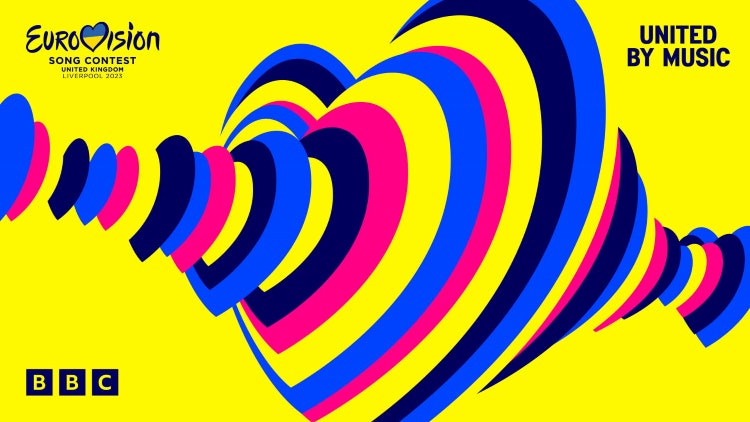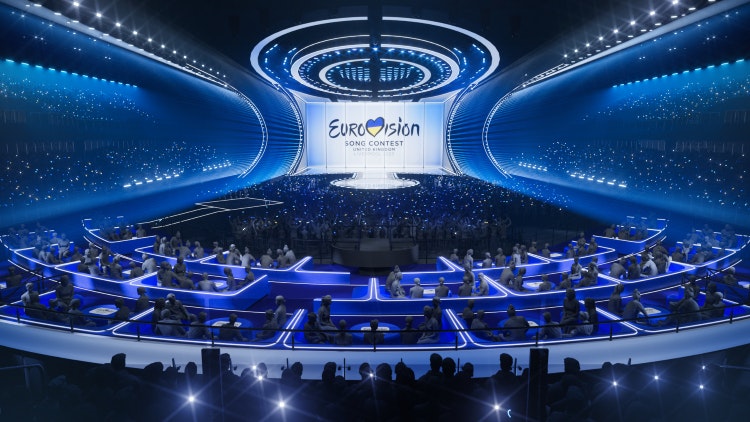The BBC broadcast identity and stage design for the Eurovision Song Contest 2023 has been revealed, inspired by the natural synchronisation of human heartbeats to music and its ability to build bridges between nations.
Superunion and Ukrainian studio Starlight Creative are responsible for the visual identity, while New York-based specialist production design firm Yellow Studio led the stage design. As the runner-up in last year’s contest, the 2023 event will be hosted by the UK in Liverpool on behalf of Ukraine this May.

The broadcast identity draws on the notion of “millions of hearts beating as one”, according to the BBC. From the largest central heart, smaller hearts gradually decreasing in size emerge from both sides, creating a 3D effect.
The colour palette was inspired by the Ukrainian and UK flags. Hearts appear in bright blue, navy and pink hues and are set against a yellow background.
Superunion creative director Katherina Tudball says that the studio’s response to this year’s theme was influenced by research that showed that “human hearts synchronise to beat in unison” when experiencing live music together.
The studios opted for a sans serif typeface called Penny Lane, which is derived from 20th-century cast iron signs displaying Liverpool street names, and is also a nod to the city’s rich musical heritage.
Eurovision’s visual identity was designed to work alongside the contest’s new slogan: United by Music. It first appeared during the Handover and Allocation Draw programme, broadcast on 31 January on BBC Two and BBC iPlayer.
In Liverpool, the identity will feature on the exterior of St George’s Hall and the Liverpool sign at the Liverpool ONE shopping complex before being rolled out more widely across the city in April.
Superunion’s executive creative director Stuart Radford says: “We are thrilled to create the 67th Eurovision Song Contest visual identity in partnership with Ukrainian agency Starlight and the BBC.”
Startlight’s Olena Martynova adds: “For Starlight, it is an opportunity to represent Ukraine on an international stage, showcase our creative and musical ability, and create something that honours our strength and the power of unity.”

Yellow Studio designed the 220 sq m of staging to acknowledge the unique nature of this year’s contest, given that it is the first time since 1980 that it has not been hosted by the winning country. The architecture is meant to appear like “a wide hug that enfolds the Liverpool Arena”, according to Yellow Studio director Julio Himede.
The studio’s design covers the whole arena floor, connecting the stage, performers, audience and greenroom as one structure, to offer contestants and hosts multiple performance locations.
This immersive approach aims to demonstrate how music can “transcend borders and bring people together as one unit”, says Himede.

- Design disciplines in this article
- Industries in this article
- Brands in this article










